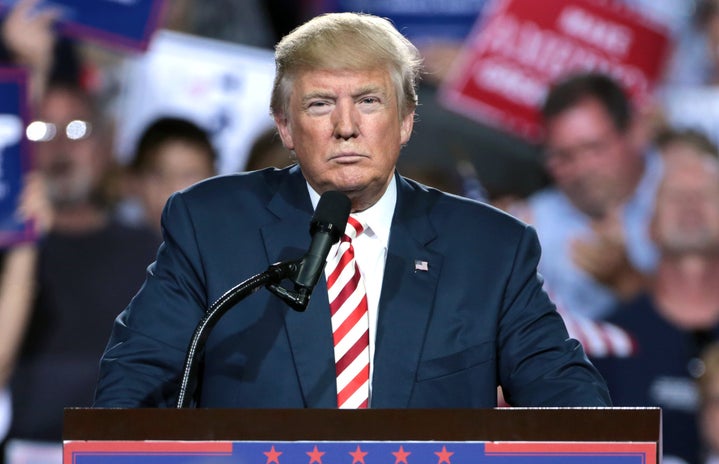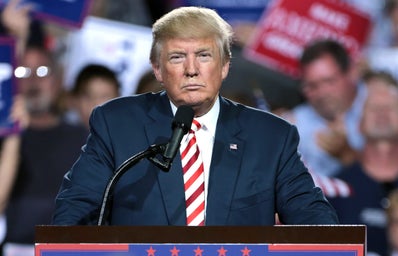When Donald Trump was banned from Twitter following the January 6th Capitol riot that he incited, he and his supporters sought a new platform for their voices. That’s when Truth Social emerged, a social media site created by Trump, designed to be a haven for his followers. However, it quickly became a hub for right-wing conspiracy theories, where misinformation thrives without regulation. Lies are rampant but often embraced as “truths” by the platform’s user base. Instead of “tweeting,” it’s called “truthing.” I decided to spend one week undercover on Truth Social during the height of election season, diving into its echo chamber to understand what the far right is discussing and promoting. Here’s what I discovered:
Lies and Conspiracy Theories
I began my Truth Social deep dive by downloading the app and creating an account. I added an American flag header and made my profile picture an AI image of Trump praying. I instantly felt that I fit right in. I followed nine accounts upfront, including Trump himself, his son, Donald Trump Jr., and a few right-wing influencers like Charlie Kirk. Over the course of the week, my following level grew as I became more comfortable with the platform. As someone who spends a lot of my time on Twitter, particularly in political circles, I found it pretty easy to use on a technical level. However, nothing prepared me for the sheer quantity of lies I found that had been spread on the platform.
One of the most prevalent lies across Truth Social during the time I was on it was what Trump got called out during his debate with Vice President Harris: that Haitian migrants in Ohio are eating pets. The first “truth” that I “re-truthed” was an AI image of Trump and a dog, with the message “Make Animals Safe Again.” Another one was one of Trump’s “truths,” which read, “I HATE TAYLOR SWIFT!” The replies to this “truth” were most fascinating, with some supporters defending the tweet and some questioning if this “truth” was a good idea. One person replied, “Oh boy… this one isn’t going to help much. Why couldn’t we just ignore her and move on?” It received two thousand likes in the two hours since it was posted.
The replies to this were interesting, as some people blindly suggested that Trump knew something they didn’t and that he had a good reason for posting this tweet. Some were even saying that they were suspicious that Trump’s account got hacked. In my view, the psychology behind this suggests that Trump’s supporters feel unsafe in the United States due to the way he inflames his rhetoric. Since he has made them feel afraid and like they are in danger, they look to an all-powerful being to protect them. Also, they don’t want him to be a horrible person who tweets that he hates women because that would mean that they are voting for a horrible person. One hypothesis I have developed during my time on Truth Social is that many of these people just don’t want to admit they were wrong to support Trump. Admitting you’re wrong is one of the most challenging things in the world for people.
The Cult-Like Mentality
To integrate myself into this app, I needed to do more than just “retruth” things. I began replying to posts, playing into the rhetoric the former president’s supporters shared. In doing so, I hoped to increase my number of followers. Another way I increased my follower count was by following regular people who were Trump fanatics. A few people I followed instantly messaged me, asking me how my weekend was and calling me a patriot. This strange interaction struck me as odd, considering random people don’t usually directly message me on Twitter.
One woman I followed, whose name on her account read, “Women for Trump,” had a “truth” pinned to her profile. The “truth” included Donald Trump quoting her tweet, replying “THANK YOU. SO NICE!” to her truth, which read: “I wouldn’t mind to walk over broken glass, I wouldn’t mind to walk through a blizzard, I wouldn’t mind to walk through the desert to vote for my favorite President for the third time.” Besides the obvious grammatical errors, the most worrying part about this “truth” concerns the cult-like rhetoric. This is a common sight on Truth Social. Although I’m sure some Trump followers are not engaged in this extreme method of support, Truth Social is a place for the farthest right Republicans to gather.
This told a bigger story about the Republican Party as a whole: The GOP has come a long way from the days of Mitt Romney, a Republican governor from Massachusetts who instituted a statewide healthcare system that became a model for President Obama’s Affordable Care Act. The GOP of today is unrecognizable compared to the GOP of 2010.
My Reflection
My week undercover on Truth Social was a deep dive into a unique and turbulent corner of the online world. As I navigated through the platform, it became evident that Truth Social serves not just as a social media site but also as a battleground for ideology, where misinformation and extreme rhetoric flourish unchecked. The platform’s environment is a striking contrast to the more moderated spaces I am accustomed to, where people are afraid to speak in inflammatory ways for fear of getting their accounts suspended or deleted. It really exposed the differences in how political discourse can occur online.
The responses to Trump’s posts are often divided between unquestioning loyalty and cautious dissent. This divide might reflect more profound anxieties within the far-right. The need to rationalize their support usually overrides critical thinking. The reactions to posts and the intense loyalty displayed reflect broader changes within the Republican Party. This week revealed a microcosm of how political identities and beliefs are shaped and reinforced in an echo chamber, where dissenting opinions are minimized and collective narratives are amplified.
While the experience was enlightening, it also reinforced the importance of critically engaging with information and encouraging open dialogue across ideological divides. At times, scrolling through the endless barrage of falsehoods felt overwhelming. There were moments when I couldn’t help but laugh at the absurdity of some posts, but it was also deeply unsettling to see how easily misinformation spread unchecked.
However, as someone from Florida who has always leaned left and been engaged in politics, I had to learn how to reach across the aisle and find common ground while growing up. The people using Truth Social clearly have no idea what that consists of. As political landscapes continue to evolve, understanding platforms like Truth Social can offer insights into contemporary political discourse. It also exposes our many challenges in navigating such a polarized world. Unfortunately, while Donald Trump is still at the forefront of the Republican Party, this polarization is likely only going to get worse. In attempting to close the gap between the right and the left in the United States, the first step is understanding the other side.


